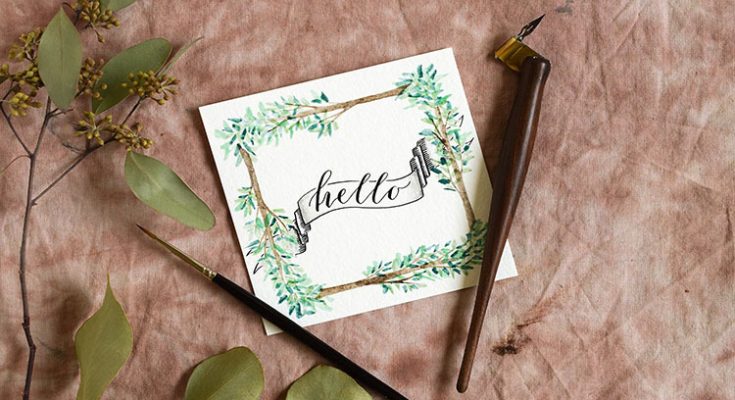Can Lefties Do Calligraphy?
Calligraphy is an art which requires precision and detail in its very essence. To say that instruments aid doing calligraphy will not be entirely untrue, however, it is the movement of the hand that decides the extent to which calligraphy can be perfected. If you do not have sufficient control over your hand you cannot do good calligraphy. Clearly lefties being a minority, most knowledge and training available for calligraphy is premised upon a righty’s dexterity with the pen. But it is not true that lefties cannot do calligraphy. By taking in cognizance the common mistakes, using the right technique, and with adequate practice a lefty can do calligraphy with as much ease as a righty. Let us see how.
Patience:
Something which holds true for both righties as well as lefties is to keep patience. The victimization that lefties subject them to by exaggerating most disadvantages they face in the initial stages deters them from moving ahead out of frustration. Smudging, clammy palms, not getting the right writing angle, the ink not cooperating with you is a myth. Everything needs some time for basic familiarisation and consequent practice makes you a pro. Just keep experimenting with the paper placement/rotation, placement of your hand, the different angles you can try until you get it right. But to begin with, give yourself time, more time if you are a lefty. However, the fact that you are a lefty needs to be obliterated out of the mind.
Finding the perfect grip:
The most important thing to find for a lefty doing calligraphy is a grip that suits him or her, the first thing to do is try to develop a grip that keeps your hand under the calligraphy. If that just doesnt feel right to you, then you can try writing with a hook. In the end, as long as your grip allows you to exert even pressure on both tines of your nib, then you are holding the pen correctly. It is seen that most lefties write in different ways depending upon what the writing instrument being used is. For some writing with a regular pen or pencil makes their hand smudge their lettering as in the process they run over it. Will you stop doing calligraphy in that case? Of course, one has to identify the problem to find a solution. Just try and change the position of your hand so that you place your hand underneath the line that you are writing in to avoid smudging. There are other errors we make, and through practice we also find adequate solutions to them. All this is aimed at perfecting the grip.
A pen-7-nib combination:
This comes after spending some time doing calligraphy and finding yourself a favourite pen nib combination. If you find what brings out the best calligraphy out of you, then you will enjoy practicing and honing your skills. There is no one favourite style that you are expected to choose, depending upon what kind of calligraphy is in trend, and your preference may change. It is important to initially try out different pens and nibs to find out what works best for you. Commonly used pens and nibs are the straight Tachikawa T40 pen, Hunt Globe 513 EF, or a Hunt 512 Ex-Fine. If you are just beginning to write then you can also try Nikko G or Zebra G.
Left-oblique pens:
There are different kinds of pens available for calligraphy and from them an oblique pen is such that is very commonly used. Most lefties make the mistake of buying them and face difficulty while writing. Oblique pens are generally made for righties by design. You should always use a straight pen if you are a lefty. In case, it gives you trouble you can then specially use designed pens for lefties, left oblique pens.
Practice:
A lefty or a righty, given the intricate understanding, the calligraphy demands it is paramount that you put in adequate time in practicing. Initially, it is likely that you will fail at getting the right stroke and feel unmotivated. But the trick is to keep practicing without much cribbing and the process becomes the best teacher eventually.

